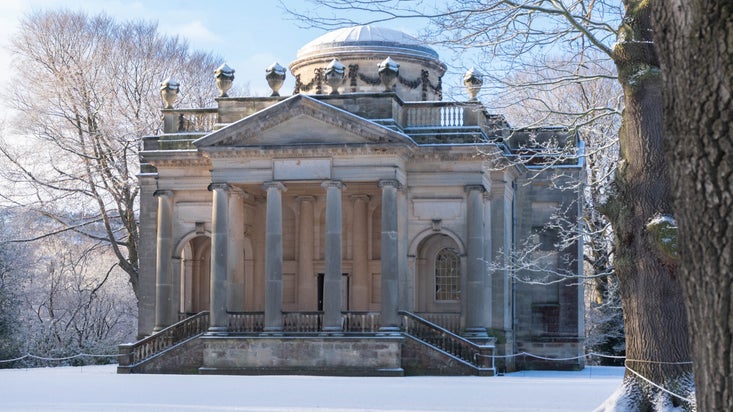
Discover more at Little Clarendon
Find out when Little Clarendon is open, how to get here, the things to see and do and more.

Little Clarendon is only open to the public for a few hours a year and visiting it feels like going back in time. With its house, grounds and unique chapel, the site has a history spanning back to its mysterious origins in the 15th century. Today, however, it looks the way it did when residents George and Mary Engleheart restored it more than a century ago.
It’s known that Little Clarendon was built in the 1400s. However, nothing is known about the site or who lived here for the first 200 years or so. Records show that Henry Hayter, a yeoman who’d worked at nearby Clarendon Park, was granted the house in 1697.
Little Clarendon – known at the time as Coombes Land – was the home of several generations of Hayter until, about a century later, it was sold on.
By the time a 26-year-old William Maslen Barnes inherited the house in 1822, it came with 18 hectares (45 acres) of land, plus the lease of three other cottages in the village. By this point, the house was already about 400 years old.
Barnes lived at Little Clarendon, which was now called Hayters, for the rest of his life and, as he never married, he left it to his great-nephew Henry Palmer Alexander, who was only 12, in 1866.
The house welcomed many different residents over the next 140 years – mostly farmers and labourers who worked the nearby land – as well as a lot of construction and renovation.
Then, in 1901, the house as well as several acres of land and two cottages, fell into the hands of Mr and Mrs Engleheart.

George Engleheart was a gardener and poet who grew up on the Channel Islands. After studying at Oxford university, he became a member of the clergy known as a curate.
Mary Evans was a devout Quaker and she and George married in 1878. Two years later, after living and working in Leicester, his curacy brought the couple to Wiltshire.
After 22 years George, who was now a Reverend, and Mary bought Little Clarendon for £1,725.
Catherine Engleheart later described the Little Clarendon that her parents bought: ‘Both house and land were in a dreadful state. The house was divided up between two families in a warren of passages and rooms like biscuit tins.
'The old fireplaces had to be discovered, and the shape of the original rooms; there were little modern grates of atrocious style everywhere; the walls were covered with patterned paper, the ceilings set to hide the old beams, and half the mullioned windows were built up.’
With the help of a small team, including an architect, George and Mary set about restoring Little Clarendon. Mary focused on the inside and George the outside.
They reopened fireplaces, exposed beamed ceilings, took down partitions, retiled the roof and repaired the walls and chimneys. Mary watched over the work and ‘nipped in the bud many stupidities of architect and builder’.
The married couple lived and raised their young daughter among the dust and rubble until, in September 1902, the work was complete and the Englehearts officially moved in.
Mary went on to convert a bakehouse into a Roman Catholic chapel dedicated to Our Lady of Pity, which is still used occasionally.
Years later, she left Little Clarendon to the National Trust. The house is furnished now as it was in the Englehearts’ day and the chapel is open to the public just three or four days a year.
Please call ahead before planning your visit.

- E A Bowles, Handbook of Narcissus, 1934
When the Englehearts first moved to Wiltshire, long before they took on Little Clarendon, George became fascinated with flowers, namely the genus narcissus, otherwise known as the daffodil.
He caused a stir when he developed a new kind of daffodil and went on to dedicate himself to rediscovering little-known species. He was even awarded the Victoria Medal of Honour by the Royal Horticultural Society in 1900.
When he and his wife bought Little Clarendon, George's focus was firmly on the garden. He set up greenhouses and a daffodil field with long numbered beds with broad grass walks between them for his many flowers.
Here he bred many new varieties, and the outbuildings were fitted with orderly shelves in readiness for the harvest of bulbs.

Find out when Little Clarendon is open, how to get here, the things to see and do and more.
Learn about people from the past, discover remarkable works of art and brush up on your knowledge of architecture and gardens.
